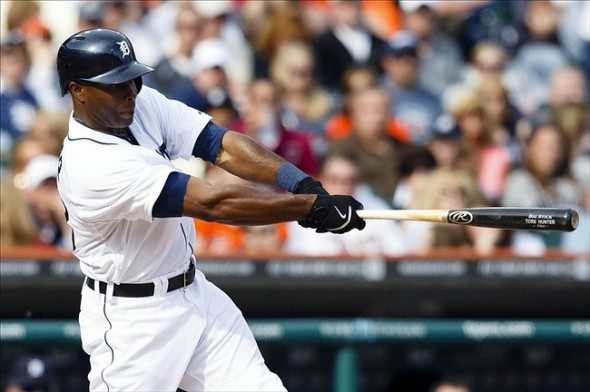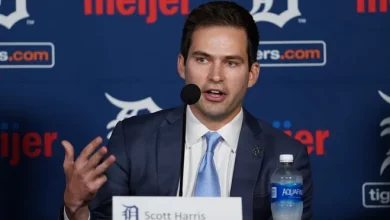

Torii Hunter has been a great player for many years. He’s made five All-Star teams, won nine Gold Gloves and hit more than 300 home runs. His track record includes countless highlight-reel catches, MVP votes, postseason success and nearly 50 bWAR in 17 big-league seasons. That probably won’t be enough to land him a spot in the Hall of Fame, but there’s no questioning his plaque in the fictional Hall of Very Good.
But for all of Torii Hunter’s accomplishments, he had never batted .300 in a season until 2012, his final season with the Los Angeles Angels. He came close in 2009, when he hit .299. But most years, his average settled near .270 or .280. It was surprising then when his average spiked from .262 in 2011 to .313 the next year, the same summer he turned 37. Incredibly, Hunter managed to pump up his average 51 points — an increase almost unheard of for players his age — despite posting the worst strikeout rate of his career.
The explanation behind his batting average boost was a fluky .389 BABiP, the second-highest mark in baseball last year (one point below Dexter Fowler). Torii Hunter’s not getting any faster at this stage in his career, so he must have gotten luckier, right?
Well, to some degree, yes. Fortune always plays a part in BABiP and batting average, but there’s more to it than that. Torii Hunter did get lucky, but he also altered his batting approach. To compensate for his diminishing power stroke, Hunter leveled out his swing, an adjustment that resulted in a career-best line drive rate and ground ball rate, as well as a career-low fly ball rate. Accordingly, his BABiP went through the roof. Fly balls that don’t leave the park tend to wind up in outfielders’ mitts. Line drives and ground balls, on the other hand, find holes and take funny hops. They are tougher to convert into outs.
This year, Hunter’s BABiP and batted-ball data have regressed closer to his career norms, though he’s still enjoying good luck on balls in play with his .342 mark. One would expect his batting average to suffer a similarly drastic drop-off, but instead, it’s dipped just five points to .308.
So, how is he pulling that off? Hunter’s been able to maintain his high average by getting the bat on the ball more frequently and becoming hyperaggressive at the plate. His strikeout rate is down, his contact rate is up, and he’s swinging at everything. No wonder his walk rate is down to 4.4 percent, easily the lowest of his career. Here’s another stat to illustrate how trigger-happy Hunter’s become: in a 52-game stretch from June 9-Aug. 12, he walked four times.
That kind of approach would spell disaster for most players (see: Jeff Francoeur), but it’s working for Hunter. After batting .274 in his first 15 seasons, he’s a .310 hitter since opening day 2012. And he’s not slowing down. Since June 16, he’s batting .324 and slugging .555, providing plenty of offense for the Detroit Tigers, who got hot and lead their division by a comfortable margin. Barring a late-season collapse, the defending American League champions will return to the postseason, putting Torii Hunter in position to bolster his already-impressive resume with one more credential: a World Series ring.





